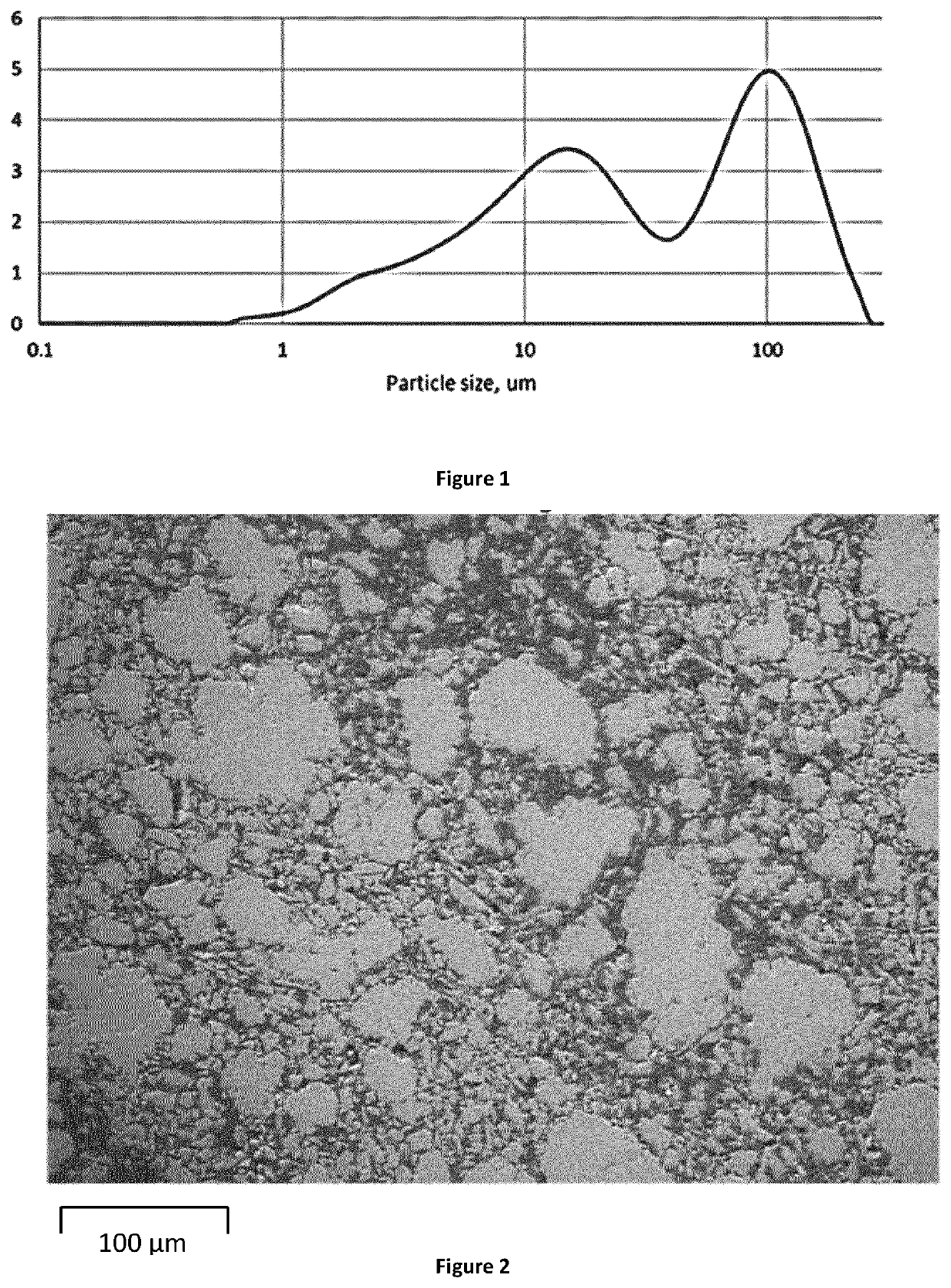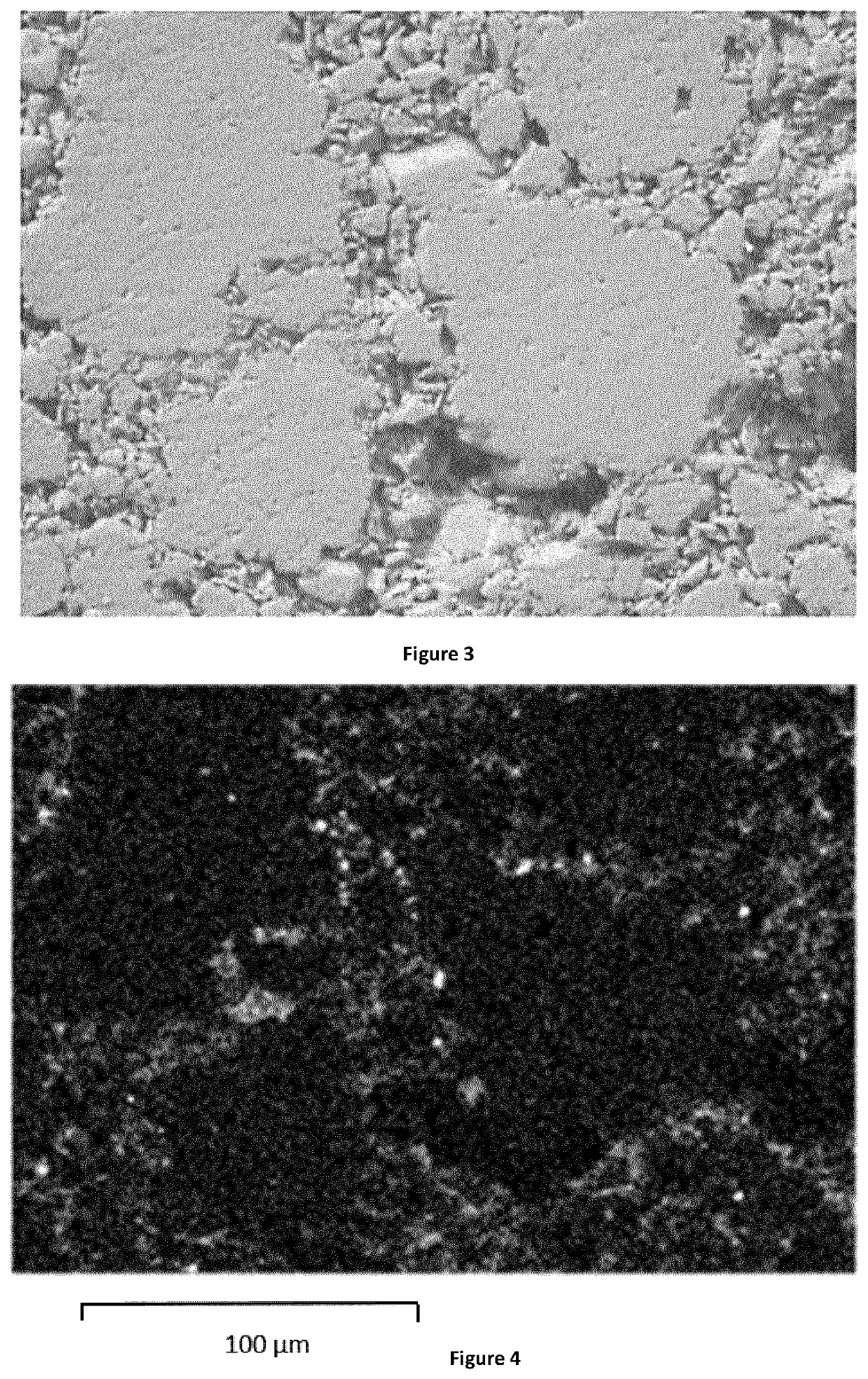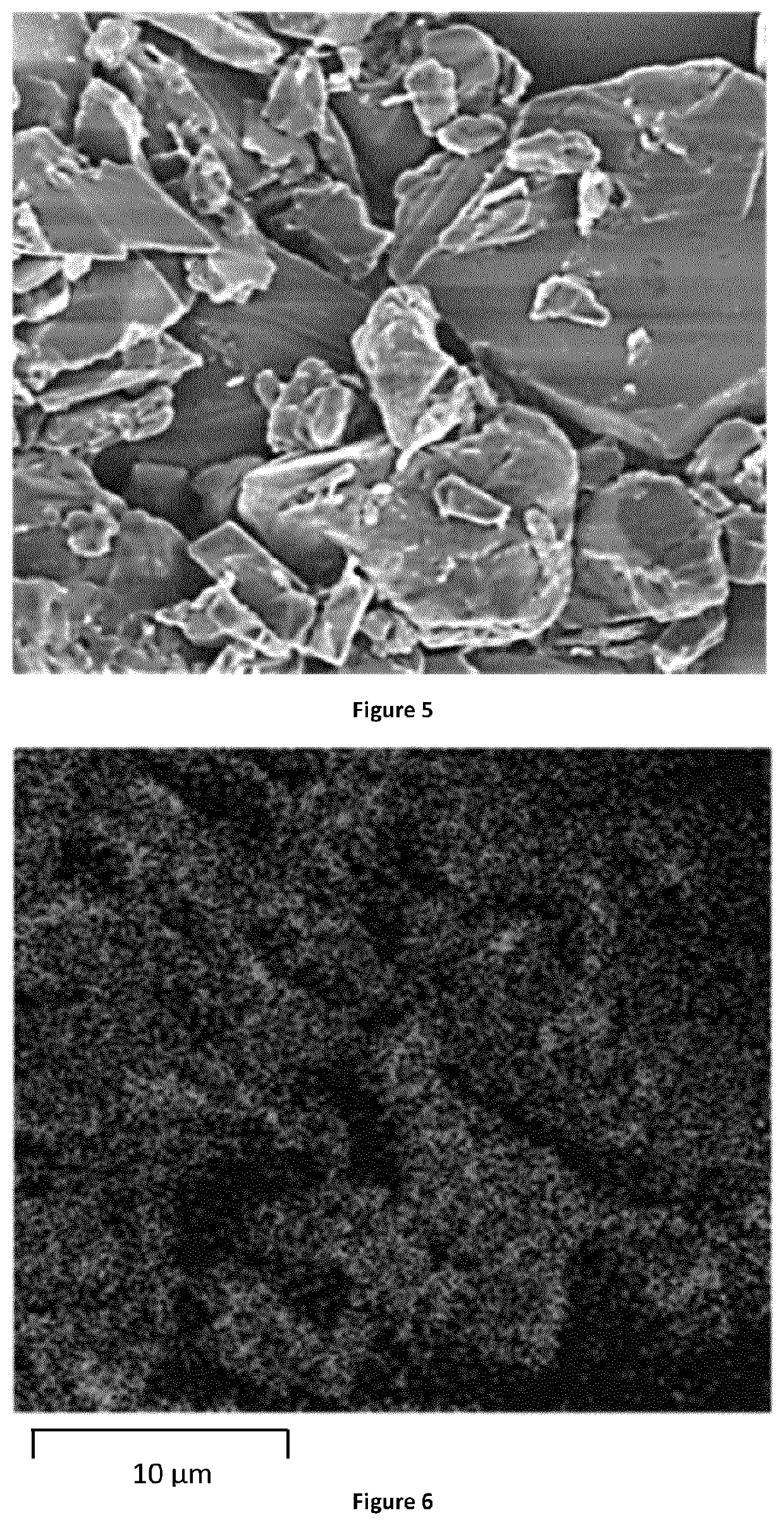Porous Endothermic Article
a technology of endothermic materials and porous materials, which is applied in the field of porous endothermic articles and endothermic energy storage device housings, can solve the problems of uncontrolled release of stored energy, fire hazards, and failure of electrical energy storage devices to opera
- Summary
- Abstract
- Description
- Claims
- Application Information
AI Technical Summary
Benefits of technology
Problems solved by technology
Method used
Image
Examples
Embodiment Construction
[0156]An approximately 25 Kg batch was prepared by measuring out 21.25 Kg of Aluminium Trihydrate (ATH); 3.00-3.19 Kg of paraffin wax (melting point: 52° C.); and the remaining 0.56-0.75 Kg of stearic acid. The material in its injected state is comprised of 82-87 wt % Aluminium Trihydrate (ATH) (containing a maximum of 0.3 wt % Na as Na2O).
[0157]The remaining 13-18 wt % is comprised of organics which can be broken down further to 15-20 wt % stearic acid and 80-85 wt % paraffin wax. The stearic acid has two functions in the formulation, acting as a wetting agent for the mix and a lubricant for injection into the moulds. If the stearic acid drops below 1.5 total wt % then the material does not mix well and as a result there are issues filling a desired mould. The paraffin wax acts as a fugitive binder and, when the mix is heated above the melting point of the paraffin wax (e.g. about 52° C.), the mixture's viscosity is sufficiently reduced to fill the desired mould.
[0158]The ATH can b...
PUM
| Property | Measurement | Unit |
|---|---|---|
| Temperature | aaaaa | aaaaa |
| Temperature | aaaaa | aaaaa |
| Length | aaaaa | aaaaa |
Abstract
Description
Claims
Application Information
 Login to View More
Login to View More - R&D
- Intellectual Property
- Life Sciences
- Materials
- Tech Scout
- Unparalleled Data Quality
- Higher Quality Content
- 60% Fewer Hallucinations
Browse by: Latest US Patents, China's latest patents, Technical Efficacy Thesaurus, Application Domain, Technology Topic, Popular Technical Reports.
© 2025 PatSnap. All rights reserved.Legal|Privacy policy|Modern Slavery Act Transparency Statement|Sitemap|About US| Contact US: help@patsnap.com



